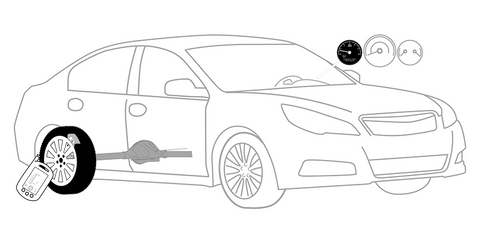The Tire Pressure Monitoring System (TPMS) tracks the amount of pressure in tires and alerts a driver when the pressure is at an insufficient level. There are two types of tire pressure monitoring systems—direct and indirect. A direct TPMS receives information from pressure sensors inside each tire on the vehicle, while an indirect TPMS uses speed sensor data from the wheels to determine tire pressure levels. When a tire has an insufficient level of pressure, it becomes a safety hazard for various reasons. If pressure is too high, tires tend to bounce and lose traction. If pressure is too low, tires heat up quickly and wear out easily. Heat can negatively affect the tread of a tire and ultimately lead to blowouts and accidents. We recommend that drivers pay attention to the Tire Pressure Monitoring System and heed any warnings it produces. When your TPMS alerts you to a tire pressure problem, please contact us for assistance. Our service staff is equipped with the right tools for the job. After we use our professional diagnostic tools to obtain information from your TPMS, we can help you inflate or deflate your tires until they are within the correct pressure range. We can also check that your pressure or speed sensors are working correctly. In the case that your Tire Pressure Monitoring System is simply not working at all, our service staff will determine the correct repair procedure. If you have any questions about the functionality of your TPMS, please give us a call or contact us online. We are happy to discuss your TPMS with you and look forward to sending you back out on the road with a fully operational system.
.





